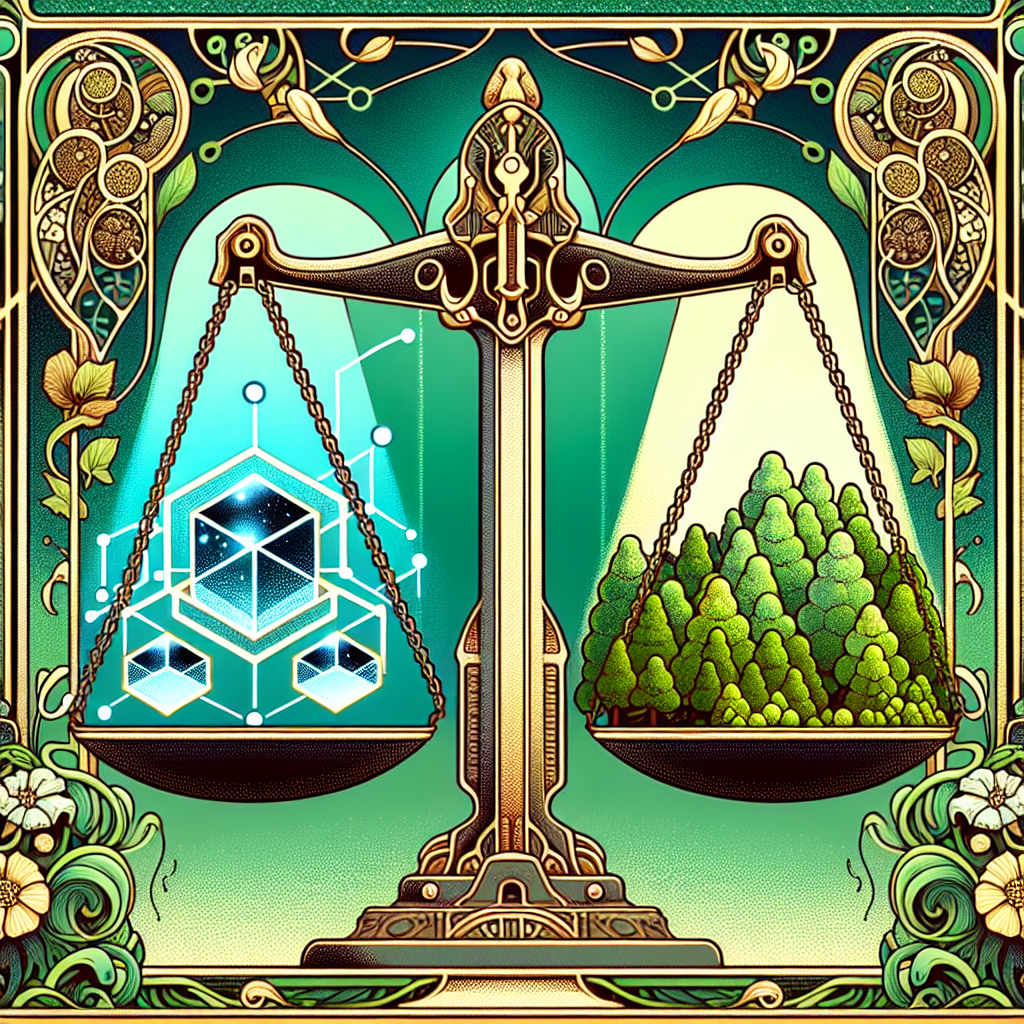The Carbon Credit Conundrum: Will Tokenization Save or Corrupt Environmental Markets?

In an era where 'green' is both a color and a corporate strategy, the carbon credit market sits at a curious intersection of environmental salvation and capitalist innovation. With CarbonHood, Redbelly Network, and Blubird recently announcing their ambitious $70 billion tokenization deal—bringing nearly a billion tons of carbon credits on-chain—the question looms: are we witnessing the revolutionary cleansing of a flawed system, or simply digitizing our path to climate disaster with better accounting?
The Current State of Carbon: A Market Built on Shifting Sands
Let's be honest—the traditional carbon credit market has about as much transparency as a coal mine at midnight. With multiple registries, inconsistent standards, and verification processes that could charitably be described as 'creative,' it's a system practically designed for manipulation.
Research suggests that up to 75% of certain carbon credits don't actually result in real emissions reductions. They're essentially ecological IOUs written on disappearing ink. The current market suffers from:
- Fragmented registry systems (CarbonHood alone uses 15 separate registries)
- Verification challenges that make proving actual impact nearly impossible
- The persistent specter of double-counting, where the same environmental benefit is claimed multiple times
- 'Greenwashing' opportunities that let companies claim environmental virtue while changing virtually nothing about their operations
As one analyst put it, 'Buying a traditional carbon credit is sometimes like paying someone not to rob a bank—they probably weren't going to do it anyway.'
Blockchain: The White Knight in Digital Armor?
Enter tokenization—the process of representing carbon credits as digital assets on a blockchain. The CarbonHood/Redbelly/Blubird deal represents the most ambitious attempt yet, aiming to eventually bring $2 trillion worth of carbon assets on-chain.
Proponents argue that tokenization offers several compelling advantages:
1. Transparent Ledgers, Transparent Impact
Unlike traditional registries, blockchain creates an immutable, transparent record of every credit's journey—from issuance to retirement. This 'digital DNA' makes it significantly harder to double-count or misrepresent credits.
As Yani Wolf, Director at CarbonHood, explains: 'Our mission is to revolutionise trust in the carbon credit market by providing a secure, transparent, and reliable platform for certifying and trading carbon assets.'
2. Liquidity for Planetary Lungs
By making carbon credits more easily tradable, tokenization can increase market liquidity and accessibility. This potentially means more funding flowing toward legitimate carbon capture and reduction projects.
3. Smart Contracts, Smarter Carbon
Automated smart contracts can enforce standards and verification requirements, potentially eliminating many of the inefficiencies and opportunities for manipulation that plague current systems.
Or Just Greenwashing 2.0?
Yet critics argue that blockchain may simply be applying a high-tech veneer to fundamentally flawed products. After all, if the underlying carbon credits aren't legitimate, no amount of digital transformation will make them environmentally valuable.
Key concerns include:
1. Garbage In, Garbage On-Chain
If the original verification of carbon reductions is faulty, then tokenizing these credits only immortalizes their flaws. The immutable nature of blockchain works both ways—it can permanently record both legitimate and illegitimate claims.
2. The Regulatory Wild West
The regulatory framework for tokenized carbon credits remains underdeveloped, creating potential gaps that sophisticated market participants could exploit. Without proper oversight, blockchain could actually make it harder to identify bad actors hiding behind technological complexity.
3. Energy Consumption Hypocrisy
Some blockchains consume significant energy, creating the ironic situation where the infrastructure used to trade carbon credits might itself contribute to the problem it aims to solve. While many modern networks (including Redbelly) use more efficient consensus mechanisms, the tension remains.
Finding Balance in the Carbon Ledger
So will tokenization save or corrupt environmental markets? The answer, as with most technological revolutions, likely lies somewhere in the middle, weighted by how we implement these systems.
Tokenization alone can't fix fundamental issues with carbon credit verification and additionality (ensuring credits represent truly additional carbon reduction). However, it can create the transparency and accountability necessary to identify and address these problems.
What's clear is that the status quo is insufficient for the climate challenges we face. The current carbon market, with its opacity and questionable impact, desperately needs reformation. Blockchain offers powerful tools for that reformation—but tools are only as good as the hands that wield them.
As Redbelly's Executive Chairman Alan Burt notes: 'Our fast, secure blockchain network will make this the first project to issue carbon assets directly from a global on-chain registry. Redbelly's Layer 1 integration of verifiable credentials and accountability, combined with our support for real-world regulations, ensures that CarbonHood can effectively address concerns around validity, compliance, and maintaining asset value.'
The Path Forward: Technology with Integrity
For tokenization to fulfill its promise of revolutionizing environmental markets, several elements must come together:
- Enhanced Verification Standards: Blockchain can make verification transparent, but the standards themselves must be rigorous and scientifically sound.
- Regulatory Clarity: Clear regulatory frameworks that leverage blockchain's transparency while preventing manipulation.
- Educational Initiatives: Ensuring market participants understand both the capabilities and limitations of tokenized carbon credits.
- Cross-Chain Compatibility: Standards that allow interoperability between different blockchain networks to prevent market fragmentation.
The $70 billion CarbonHood/Redbelly/Blubird initiative represents either the dawn of a more transparent, efficient environmental market—or the digitization of ecological indulgences on an unprecedented scale. The outcome depends not on the technology itself, but on how we use it.
In the end, perhaps we should view blockchain not as environmental salvation or corruption, but as a powerful spotlight. It can illuminate both the best and worst aspects of our carbon markets, giving us the clarity to choose a more sustainable path forward.
After all, in the fight against climate change, the most dangerous carbon might be the kind we can't see.




